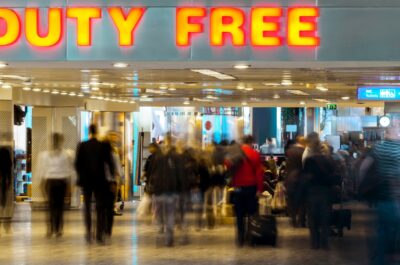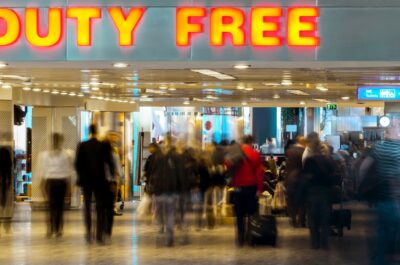Footfall, purchase rate and spend levels are higher among travellers with children, according to the latest research from m1nd-set.
The Swiss agency’s latest research demonstrates that the family traveller segment represents greater opportunities for global travel retail. Based on recent interviews conducted with more than 12,000 international passengers at more than 60 airports across the globe, the research reveals that travellers with children are more likely to visit the duty free shops, as well as purchase in the stores and have a higher average spend than shoppers who are not travelling with children.
Higher spend and more items purchased
The research reveals that 46% of all passengers travelling with children visited the shops at the airport at some point on their last international trip compared to 42% of travellers without children. Among those who purchased, the average spend by shoppers with children was significantly higher compared to those travellers without children. Average spend per item is also higher among shoppers with children, according to m1nd-set, at $42 on average for shoppers with children compared to $39 for shoppers travelling without children.
Shoppers with children also spend significantly more on specific categories, namely Electronics, Clothing and accessories, Jewellery & Watches, Alcohol and Souvenirs & Gifts. In terms of the number of items purchased, the shopping basket is also fuller for shoppers with children; they purchased slightly more products on average compared to shoppers without children, according to the m1nd-set research.
m1nd-set owner and CEO Dr. Peter Mohn commented on the findings: “Children tend to deploy numerous strategies when influencing their parents to make a purchase; these range from aggressive and persuasive tactics to emotional tactics, plain rational or by demonstrating in-depth product knowledge. We see also that older children tend to wield greater influence over their parents shopping behaviour. They tend to be more resourceful and better equipped with the extensive knowledge and information from influencers across social media.”
“These are of course the much talked about and high potential Gen Z consumers,” Mohn continued, “so while those who are not yet in the job market may not be spending themselves, they are still able to influence their parents’ shopping behaviour. Adolescent and even pre-adolescent children tend to have better understanding of the latest trends and cool brands; they serve as the information-gatherers and tend to advocate for specific brands.”
Middle aged pre-planners
According to m1nd-set, shoppers travelling with children are mainly middle-aged; 65% of shop visitors travelling with children were middle aged, compared to 46% of visitors travelling without
children. They also have a tendency to pre-plan their purchases in the duty free shops; 49% of shoppers travelling with children planned their visits compared to 45% among travellers without children.
Purchase destination and drivers
The m1nd-set research also reveals that shoppers with children are driven predominantly by value both to visit the shops and to purchase. They purchase to share more than those without children (18% vs 12%). The experience in store and ability to navigate easily through the store is more likely to encourage shoppers with children to purchase than those without.
Recommendations from friends tend to have more influence on shoppers with children also. There is quite a significant difference in shopping behaviour vis à vis promotions across the two segments. 62% of shoppers travelling with children said they purchased a promotion compared to only just over half (51%) of shoppers without children. They also tend to buy unique travel retail exclusive products more than shoppers travelling without children.
Harnessing the ‘Pester power’ potential
Commenting on how industry stakeholders can capitalise on the opportunity of families shopping in travel retail, Peter Mohn added: “The influence that children, and the presence of children, have on their parents when travelling and shopping in duty free and travel retail stores is significant and not to be underestimated. To harness the potential of “pester power” as the kids’ influence is often referred to, several factors need to be considered. Stakeholders need to consider where and how to reach these influencers with inclusive messaging that targets parents and their children.”
Brands need to create engaging, age-appropriate content and deliver it through the apps and websites where children source their information, Mohn continued. “It’s important to find new and unique ways to grab their attention, engage their senses and appeal to them, so they in turn appeal to their parents’ and their desire to please” Mohn concluded.
m1nd-set-charts
Theodore is the Co-Founder and Managing Editor of TravelDailyNews Media Network; his responsibilities include business development and planning for TravelDailyNews long-term opportunities.

































































































































































































